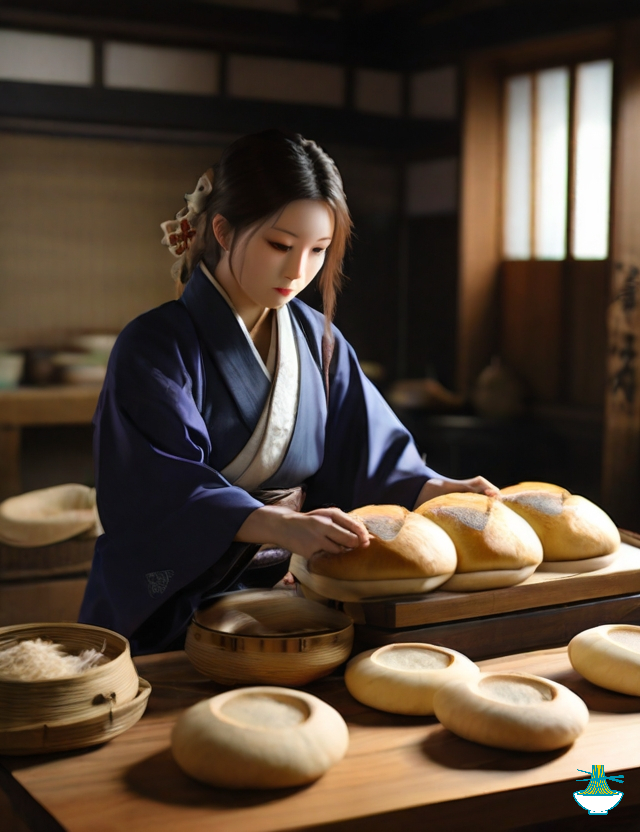Welcome to the heart of Bolivia's rich culinary tapestry, where traditional flavors come to life in the form of Tantawawa. This beloved Bolivian dish is not just a meal; it's a celebration of culture, history, and the vibrant spirit of the Andean people. Join us on a culinary adventure as we explore the art of crafting Tantawawa, a mouthwatering dish that has stood the test of time and continues to be a symbol of communal joy and familial warmth in Bolivia.
As we delve into the depths of this delightful recipe, you'll discover the unique ingredients, time-honored techniques, and the cultural significance that make Tantawawa a cherished part of Bolivia's gastronomic heritage. From its humble origins to the modern kitchen, this recipe has been passed down through generations, preserving the essence of Bolivian identity in every savory bite.
Get ready to embark on a sensory journey that goes beyond the kitchen, immersing yourself in the flavors, aromas, and traditions that define Bolivia's Tantawawa. So, put on your apron, gather your ingredients, and let's unlock the secrets of this exquisite dish that bridges the past and present, creating a tapestry of taste that captivates the senses.
Ingredients:
- 4 cups all-purpose flour
- 1 ½ teaspoons salt
- 2 tablespoons sugar
- 1 packet (2 ¼ teaspoons) active dry yeast
- 1 ½ cups warm milk
- ½ cup unsalted butter, softened
- 2 large eggs
- 1 egg yolk (for egg wash)
- Raisins or chocolate chips for decorating

Instructions:
Activate the Yeast:In a small bowl, combine warm milk and sugar. Sprinkle the yeast over the mixture and let it sit for about 5-10 minutes until it becomes frothy.
Mix the Dough:In a large mixing bowl, combine the flour and salt. Make a well in the center and add the activated yeast mixture, softened butter, and eggs. Mix until a dough forms.
Knead the Dough:Turn the dough onto a floured surface and knead for about 8-10 minutes until it becomes smooth and elastic. Place the dough in a greased bowl, cover it with a clean kitchen towel, and let it rise in a warm place for 1-2 hours or until doubled in size.
Shape the Tantawawa:Punch down the risen dough and divide it into two portions. Take one portion and shape it into a round ball. From the remaining portion, shape a smaller ball and attach it to the larger one, forming a head on top.
Add Details:With a sharp knife, gently carve features on the smaller ball to create the face of a baby. You can also use raisins or chocolate chips to decorate the face and body.
Let it Rise Again:Place the shaped Tantawawa on a baking sheet lined with parchment paper. Cover it with a kitchen towel and let it rise for an additional 30-45 minutes.
Preheat the Oven:Preheat your oven to 350°F (180°C).
Egg Wash:In a small bowl, beat the egg yolk with a splash of water. Brush the egg wash over the entire surface of the Tantawawa.
Bake:Bake in the preheated oven for 25-30 minutes or until the bread is golden brown and sounds hollow when tapped on the bottom.
Cool and Enjoy:Allow the Tantawawa to cool on a wire rack before serving. Traditionally, it is enjoyed during the Day of the Dead festivities, symbolizing the celebration of life and remembrance of loved ones.
Share this delectable Tantawawa with family and friends, embracing the Bolivian tradition that combines culinary artistry with cultural significance.
Nutritional Values:
Nutritional values can vary based on specific brands and types of ingredients used, but here's a general overview of the approximate nutritional content for the listed ingredients in the Tantawawa recipe:
All-Purpose Flour (4 cups):
- Calories: 480 kcal
- Carbohydrates: 96g
- Protein: 12g
- Fat: 1.6g
- Fiber: 3.2g
Benefit: Good source of carbohydrates for energy, provides a moderate amount of protein, and contains essential nutrients like iron and B-vitamins.
Salt (1 ½ teaspoons):
- Negligible caloric content
Benefit: Enhances flavor, regulates fluid balance, and supports nerve and muscle function.
Sugar (2 tablespoons):
- Calories: 100 kcal
- Carbohydrates: 25g
Benefit: Adds sweetness to the bread, providing quick energy. However, it's important to consume sugar in moderation.
Active Dry Yeast (1 packet - 2 ¼ teaspoons):
- Calories: 23 kcal
- Carbohydrates: 3g
- Protein: 3g
Benefit: Acts as a leavening agent, helping the bread rise. Also a source of B-vitamins and protein.
Warm Milk (1 ½ cups):
- Calories: 183 kcal
- Carbohydrates: 18g
- Protein: 12g
- Fat: 8g
Benefit: Adds moisture to the bread, contributes to the soft texture, and provides calcium, vitamin D, and protein for bone health.
Unsalted Butter, softened (½ cup):
- Calories: 813 kcal
- Carbohydrates: 0.6g
- Protein: 1g
- Fat: 92g
Benefit: Enhances flavor and texture, provides fat-soluble vitamins (A, D, E, and K), and serves as a source of healthy fats.
Large Eggs (2):
- Calories: 140 kcal
- Protein: 12g
- Fat: 10g
Benefit: Contributes to the structure and texture of the bread, provides high-quality protein, and contains essential vitamins and minerals, including B-vitamins and choline.
Egg Yolk (1 for egg wash):
- Calories: 55 kcal
- Protein: 2.7g
- Fat: 4.5g
Benefit: Used for egg wash, which gives the bread a golden color and shiny finish. Also contains additional nutrients like vitamin A, vitamin D, and omega-3 fatty acids.
Raisins or Chocolate Chips (for decorating):
- Calories: Varies based on quantity and type
- Carbohydrates, Protein, and Fat content would depend on the amount used.
Benefit: Adds sweetness and a burst of flavor to the bread. Raisins also contribute fiber, vitamins, and minerals, while chocolate chips provide antioxidants and a touch of indulgence.
It's important to note that these values are approximate and can vary based on factors such as the specific brands of ingredients, variations in product formulations, and actual measurements used during preparation. Additionally, the nutritional values provided are for the entire batch of Tantawawa and may need to be divided based on the number of servings you obtain.


Comments